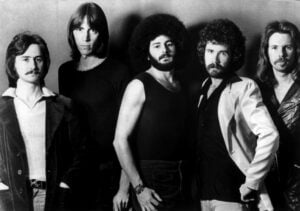On This Day in 1964: The Rolling Stones Make Their First US Chart Appearance with Their Cover of Buddy Holly Track

via Hi Tones Record Store / YouTube
Early 1964 Release
In early 1964, The Rolling Stones recorded a cover of Buddy Holly’s song “Not Fade Away.” They laid it down in London studios and released it in February via Decca (UK) and London Records (US). In the UK, it quickly rose, peaking at number 3 on the singles chart.
It became their first single released in the United States and marked their debut on the Billboard Hot 100. Though not a major hit, it reached number 48 in May 1964. This marked the Stones’ first U.S. chart entry, a key step in the band’s growing international presence.
View this post on Instagram
Making a Strong First Impression
The single made it to number 44 on the U.S. Cash Box chart and even 33 in Australia. It was included as the opening track on their U.S. album—released in May as England’s Newest Hit Makers. Though modest in the U.S., it was a declaration of the Stones’ American ambition.
The band also played the song during their first U.S. TV appearance on Hollywood Palace in June 1964. Despite backstage jests at their hair, their performance struck a chord with American audiences.
Blues and Rhythm Pulse
Their version emphasized the famous Bo Diddley beat, adding energy to Buddy Holly’s original. Bill Wyman noted how they brought the rhythm forward, and Charlie Watts said it was bold for a white band to lean into that style. The lively drums and guitar made the song a favorite in live shows, often opening their sets.
Kick-Starting a US Presence
After the single charted in late May, The Rolling Stones flew to New York on June 1, 1964, greeted by hundreds of fans and a media buzz. Their first U.S. tour included 11 shows across the country through mid-June. Even if some shows were small, the excitement foreshadowed their future growth.
That summer also saw their first U.S. top 10 hit with “Time Is on My Side,” which helped build their stateside reputation further. But “Not Fade Away” remains distinctive—it introduced them to U.S. charts and spotlighted their raw blues energy.
A Landmark Milestone
Hitting number 48 on the Billboard Hot 100 may feel modest now, but at the time, it was a major milestone. It showed Americans were listening to a band bringing real rhythm and blues to rock’n’roll. Even as they rode to bigger hits, their first chart entry was a key moment that helped shape a career spanning decades.
This breakthrough transformed them from UK hopefuls into players in the global rock scene—a step that led to chart domination, major albums, and rock history.












